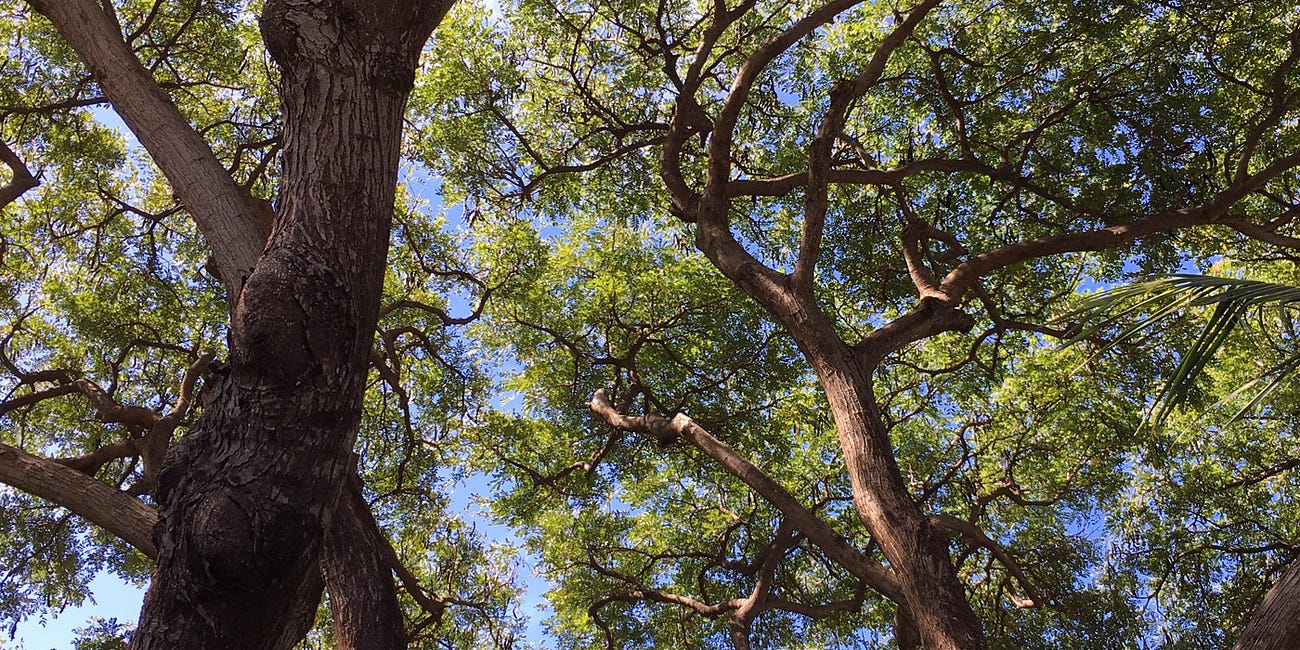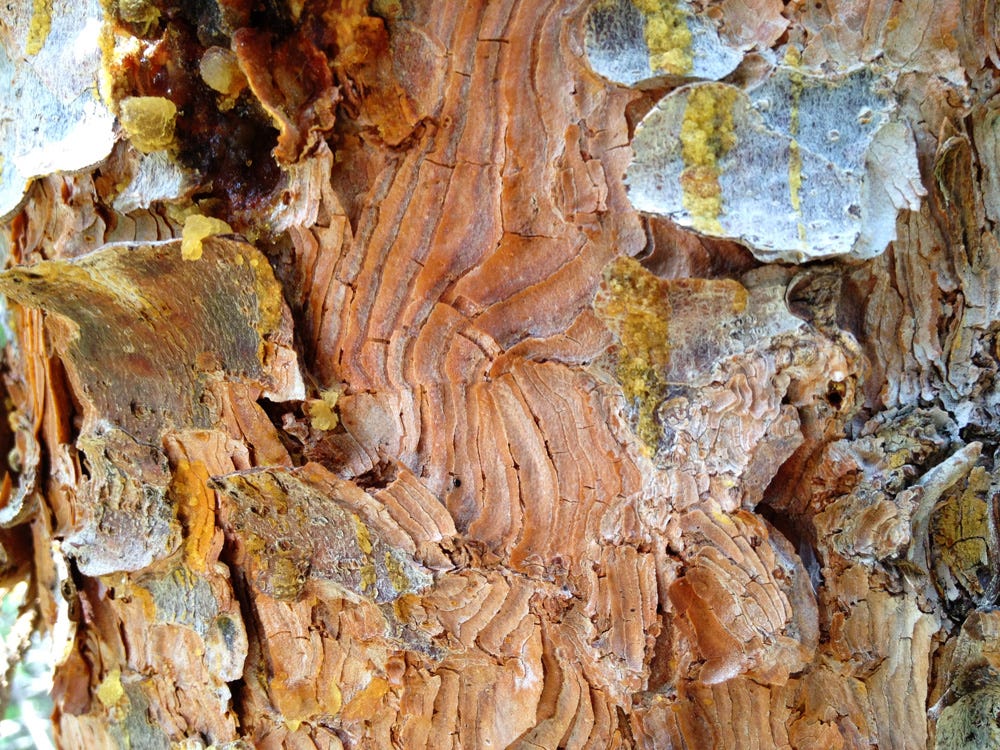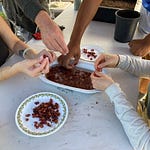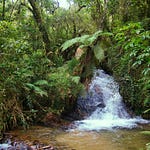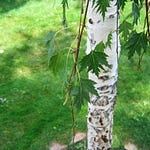Transcript
So, last time we talked about inner knowing, and how it it tends to be underappreciated, and underdeveloped, in people in Western countries because here we begin our knowing in the knowing of others. Our reflex is to listen to others’ voices first, before our own. And we also saw how thousands of years of living in social hierarchies, obeying external authorities, set the foundation for this habit. It’s a Western history of deference to authority that is not shared by Indigenous peoples, and we saw one example—the Blackfoot people of Alberta raising their children to make their own decisions from an early age.
39. The Knowing Inside
Listen now (24 min) | Transcript There’s a story told by Abraham Maslow, the psychologist. Back in the 1930s, at the very start of his career, he did fieldwork among the Blackfoot people of southern Alberta. He wanted to test the idea of emotional security or insecurity across cultures. So he camped out for a summer on Blackfoot land and conducted his surveys and interviews.
So if inner knowing is important, and if it trains people to think for themselves, how do we develop the inner sight? And, in light of a society that trains our eyes outward, how do we learn to trust the inner seeing? These are the questions for today. And they matter right now because we are at a precarious moment in this country, with authoritarians trying to end freedom of thought—trying to curb people’s ability to make their own decisions and be their own diverse and unique selves. At a time when fascists are working to bring back the old order of white male power, inner knowing is a bulwark against autocracy. We claim what we know instead of allowing reality to be dictated to us by others. Resisting propaganda involves building trust and confidence in what we know inside our own hearts.
So what do I mean by “inner knowing”? You might think I’m going to talk a lot today about intuition, but that’s a word I actually don’t use very often. I think that calling our inner knowing by that one word, intuition, leaves the impression that paying attention to what’s inside us takes a special kind of ability. Like it’s a sixth sense. Some people have intuition, and some don’t, but really you can get along just fine without it. The five senses are for the “real” world, and intuition is for the woo-woo stuff.
But what if we didn’t slice up the world that way?
What if our inner knowing includes—and requires—all our senses? And what if we have a lot more senses—a lot more avenues for receiving information from the world—than we usually give ourselves credit for? And here I’m taking a cue from the nature educator Michael J. Cohen, who says in his book Reconnecting with Nature that we have not just five human senses, we have dozens of senses, more than fifty of them—fifty-three, by his count. Fifty-three different ways that we can sense other beings and parts of nature, which means fifty-three different avenues for gathering information about them. For example, we can sense temperature and temperature change (#7 in his list). We have a sense of play and humor and laughter (#29). We have a sense of form and design (#41). We go into sleep and dreaming and are aware of our brainwaves changing (#49).
Mike Cohen says that each of these dozens of senses tells us how the world works, so when we use them, we awaken more and more of our ability to connect with reality—with the nature around us. We become able to hook our intelligence to other beings and forces of nature—to perceive more about how they live and understand more about how they act. Opening to all our senses helps us dance with intricacy of the world.
So what I’m calling inner knowing begins with all these senses—all the different ways we’re able to pick up information about the world around us. And the first step in trusting our inner knowing is to open these avenues of knowing as wide as we can. To become more sensitive, not less, to the world around us.
Not that this is easy. I have a lifetime of being sensitive to noise and smells and bright lights and feelings of all kinds. I happen to be autistic, and this is part of the range of abilities and disabilities I was born with. But when I was a young adult, people used to tell me, “You gotta be tough!” There was a different message lurking underneath, and I heard that one loud and clear: “You’re too sensitive!”
I didn’t enjoy being sensitive, but it wasn’t like I could just turn it off. Yet “being tough” seemed to work for others. When they pushed through and soldiered on, they got ahead in life. People respected them. They were leaders.
So for a while I experimented. I tried turning down the volume. Pushing through the signals if I could. Having more “perspective” about things, not getting bothered by them. And if I was bothered? Definitely not talking about it.
Now I know that I was masking—hiding parts of me in order to be accepted, to be seen as a capable adult. Because being too sensitive was definitely an immature thing—you should really grow out of it. Healthy adults didn’t get bothered by stuff. “Gotta be tough!”
But it’s not just autistic people who get these messages. In a society that trains us to listen to the voices of others before listening inside ourselves, everyone gets nudged away from their own more subtle perceptions. Sometimes it’s a matter of survival: in this noisy, industrial world, we may have to put some dampers on our senses just to get through the day. And when it comes to feelings, the old standard is still very much alive: Keep a stiff upper lip. “You gotta be tough.”
But over the decades, I found that to respect and value my own inner knowing, which means, to respect and value me, I had to run headlong in the opposite direction. I had to become more sensitive, not less. Because only by opening up, not closing down, all those avenues of knowing could I have the best chance of finding a good path through life. Each the supposed “oversensitivities” was delivering valuable information, and I had to take account of all of it. To live intelligently in the world, I had to receive all the world’s messages. Which meant accepting all my ways of receiving them: accepting all of me.
Mike Cohen is right: becoming a fully rounded human being, able to connect with reality—with nature—means using more of our senses. Giving more credence to the signals we get. Many of those signals may be subtle, but they provide information that’s crucial for navigating a good path in a world that is anything but straightforward or simple.
The signals we get may be so subtle, in fact, that we’re tempted to wave them away, as if they were a pesky fly, before they even can land. We might catch a glimpse of something out of one corner of our mind’s eye, but it’s so faint that we can’t be sure. So we just wave it away. It can become a habit, even a reflex. It doesn’t take a big swipe; just a light brush will do. So we brush, almost by instinct, and the glimmer is gone.
There was a philosopher in the midtwentieth century named Michael Polanyi who said, “We know more than we can tell.” When we see a loved one’s face, for example, we can recognize the person, but we can’t exactly explain how. Is it the eyes? The smile? All of it together? We know who that face belongs to, but if we had to explain how we know, we couldn’t put it into words. Polanyi called this kind of knowing “tacit knowing,” or knowing without words, and he said that all knowing starts here. It’s the kind of knowing that we share with other animals, he said—an implicit knowing, a very capable kind of knowing that makes excellent sense of the world, but without putting it into words.
Tacit knowing, to me, refers to all those signals that we’re getting all the time from our many many senses. And learning to trust our inner knowing, I find, means learning not to brush away the tacit knowing. Paying attention to an awareness that arises even when we can’t put it into words. It might take a bit of sitting on our hands, as it were, training them not to brush away the glimmer. Allowing the ephemeral to land without interfering. And then looking at it. Really looking straight into it. Allowing our eyes to fill with the sight.
It’s kind of like looking at the sky. How often do we really look at the clouds, allow their wisps or billows to fill the horizon of our seeing? Learning to see what appears through inner knowing is like opening our eyes to the sky—just that ordinary, available in every moment of life, but something we rarely do. The ancient Polynesians who first sailed to these Hawaiian islands were so attuned to every detail of water and sky, current and star and cloud, that they could find their way across thousands of miles of open ocean and back again. Learning to guide by our inner knowing takes that kind of attention, that kind of devotion. And it starts with observing what is—with all our senses. Paying attention to what we know without words.
And then it takes making room for what we know to flow a little more freely. Coaxing it into conscious attention. Welcoming it, as if it were a creek, and we were cleaning out the debris so the water could be free. Maybe we need to haul out some old trash, like doubt or self-doubt, so the inner streams can flow again. It might take some diligence, even some heavy lifting. We might have to become civil engineers on behalf of our inner streams—opening gates, removing dams to make room for the waters of life.
The best way I know to make room for those subtle nudges is to spend a little quiet time with ourselves. Even ten minutes a day can make a difference. And the best place to do it is outdoors, in closer contact with the life force flowing through soil and water and air. If we’re already in the habit of taking a walk, we can slow down the walk—not striding but taking it easy. This is not a time to get somewhere but a time to pay attention, to feel the breeze and listen to the birds. To say hello to the trees that we pass every day. Laguna Pueblo author Carol Lee Sanchez wrote, “There are trees and grasses and flowers and birds and ants and bees waiting for you . . . to say hello to them—to call them sister, brother, cousin, or friend.” She said they’re right here as we go about our business. So greet them as you go. Notice what happens when you do—the feelings and hunches that arise, the nudges of knowing without words.
Or maybe you have a favorite tree. Try sitting beside it for ten minutes a day, especially when you’re facing a puzzling time in life. You might let the issue rest gently in your mind while you under the tree. Touch the tree if you can. Feel the quality of its bark, notice the color, the shade of chocolate or tan or gray. Place your palm on the trunk, and listen for the hum of the tree’s life force, for the mighty strength it is using to raise many gallons of water from the ground every day and release it through the leaves. Notice the quality of light through the leaves. When you turn again to your life issue, how does it look in light of the tree? What does the tree have to say about it?
Or find ten minutes to sit quietly in the dark, either before the sun arrives for the day or after it departs. I’m a morning person, and I love to watch the the slow growing of light before dawn. I’m kind of sleepy-alert during that time, more present to the whispers of my own heart. For those who are night owls, the magic hours might be the deep darkness of midnight. In the dark the world is quieter; the birds and some of the humans are asleep. So take advantage of this little bit of spaciousness to sit with yourself and be open to what arises in the dark.
Some lines from the poet Li-Young Lee come to mind:
The first sky
is inside you, openat either end of day.
So enjoy that sky of darkness. Make room for it in your life.
And sometimes the inner nudges are not at all subtle or mysterious but bright and clear as beacons. And the brightest of them all is paying attention to what we love. As the saying goes, “You are what you love.” I know of no better way to find the smoothest path through life than becoming aware of what we love, and then trusting it enough to follow it.
But this is exactly the hard part. Because the tug-of-war for inner knowing is fought right here—on the battleground of the heart, over what we love. Dreams can be risky, even dangerous. Often “what we love” or “who we love” doesn’t make sense. And choosing to go there can be costly; it asks things of us that we’re not prepared to give, at least not yet. People might not understand. Some will judge us, others think us crazy. And there is no guarantee that what our heart wants will work out, if “working out” means getting exactly what we want. Living by the heart, in my experience, means living on the edge. It takes some bravery, some raw and tender bravery, to follow the inner knowing.
But there is good reason to follow the heart, and the closest word I know to describe it is peace. A feeling of moving with life rather than against it. Making peace with one’s own way of being, one’s own constellation of possibilities and limitations. No longer working against one’s own type. Moving in harmony with those inner nudges, trusting them to lead in good directions. When we follow the heart, we lay down arms against the self.
The thirteenth-century Sufi poet and scholar, Rumi, wrote,
Let yourself be silently drawn
by the stronger pull of what you really love.
That stronger pull of what we love will draw us in the truest direction, in my experience. Because what it makes possible is moving in harmony with the flow of life itself. We’re not fighting ourselves anymore, and so we’re less interesting in fighting life. Less interested in trying to control life or contain it or bend it to our will. More willing to move as the urge arises, to follow the nudges—maybe even a little more willing to welcome the unexpected. Nature is always doing something new, and staying in touch with each new nudge keeps us on our toes. We become more willing to work with the Great Becoming that is nature itself.
Because how we respond to the pulls of inner knowing is related to how we respond to the natural world around us. It’s all nature—what’s inside us, what’s outside us—and we will likely treat both the same way. A culture that trains its members to tamp down inner knowing is a culture that will try to control waters and land and animals and sky. It is the same impulse to control.
The opposite of control is being open. The opposite of domination is listening. The opposite of autocracy is plurality. To be able to flow with the Great Becoming of life means making room for all kinds of diverse life—within ourselves, in others, in nature. When we make room for the life that flows within us, we become more willing to make room for the needs of other species as well. We might find ourselves choosing whalesong over the whale-killing sonar of military spying and deep sea mining. We might choose meadows and marshgrass over suburban sprawl so that waters can run clean to the sea. When we can work with rather than against our own flow of life, we become more sensitive to the welfare of our more-than-human kin.
So inner knowing is more than just receiving information from what we often call our subconscious, like a “higher self” or a “deeper self”—as if the self were a vertical silo stretching from earth to heaven, walled off from its surroundings.
We are not isolated from all others, standing over them, as we have trained ourselves to think. This is what the late philosopher Val Plumwood called our “hyperseparation” from nature, an exaggerated sense that we are different from and superior to all other forms of life—supreme over all, which also leaves us supremely isolated.
But as we plumb our own inner knowing—as we open to its nudges and learn to trust its guidance—what we learn is that the knowing that flows through us connects us to every other form of life as well. The messages we pick up when we open our senses and pay attention to our feelings and hunches lead us to pay attention to others as well. And making room for these messages—noticing them, following them—leads toward greater harmony not just with our own selves but with the greater flow of life. By listening to our own hearts, we come into greater harmony with the Great Heart. We slip more easily into the Great Becoming of life.
The revelation of inner knowing is that we are part of a larger community. Inner knowing leads toward practicing relationship where before we felt separate. It deepens our connection with nature, growing our awareness from merely observing the world, or objective knowing, to responding with feeling and imagination—with all the senses we use to connect with our friends and loved ones. Following inner knowing leads us home—toward more peaceful relations with ourselves and therefore with other beings as well.
Wishing you the quiet to hear your own heart, the tender bravery to follow its pull, and a joy so full that it can overflow and nourish others as well.
For digging deeper
You can find Michael J. Cohen’s list of fifty-three senses in Reconnecting with Nature: Finding Wellness Through Restoring Your Bond with the Earth, 3rd ed. (Lakeville, MN: Ecopress, 2007), 49–51. At IMDb there’s a lovely 40-minute documentary by Charley Scull on Mike’s lifetime work of reconnecting people with nature. It’s called Naturally Attracted: Connecting with Michael J. Cohen.
Tacit knowing comes from Michael Polanyi, Personal Knowledge: Towards a Post-Critical Philosophy (Chicago: University of Chicago Press, 1958). In his later book, The Tacit Dimension (Chicago: University of Chicago Press, 1966), Polanyi explored how “we can know more than we can tell” (4).
Carol Lee Sanchez, of Laguna Pueblo, Lakota, and Lebanese heritage, wrote an essay in 1993 to help Euro-American people heal our broken connection with the land. Her advice remains timely thirty years later. See “Animal, Vegetable, and Mineral,” in Ecofeminism and the Sacred, edited by Carol J. Adams (New York: Continuum, 1993), 207–28; quote is from 225. The book is available free to read at the Internet Archive.
Poet Li-Young Lee’s lines come from his magnificent poem “One Heart.”
The Rumi lines come from his poem “An Empty Garlic,” as rendered by Coleman Barks in The Essential Rumi (San Francisco: HarperSanFrancisco, 1995), 51.
On the dangers of military sonar to whales, see Virginia Morell, “Why Whales Flee from Sonar—Sometimes to Their Death,” Science, March 21, 2022.
On deep sea mining and its harm to ocean animals, see the peer-reviewed study by Kirsten F. Thompson et al., “Urgent Assessment Needed to Evaluate Potential Impacts on Cetaceans from Deep Seabed Mining,” Frontiers in Marine Science 10 (Feb. 14, 2023). And for an explanation of the study and what it means, see “Whales at Risk from Deep Sea Mining,” at the Greenpeace website.
Val Plumwood was an eminent Australian philosopher of nature and humanity who died in 2008. Her obituary, by Freya Mathews in the Guardian, offers a wonderful overview of her life and work. Her central idea of the “hyperseparation” that Western people set up between ourselves and the rest of nature comes from Feminism and the Mastery of Nature (New York: Routledge, 1993) and Environmental Culture: The Ecological Crisis of Reason (New York: Routledge, 2002).
Related episodes
30. Cultivating Nature Spirituality
Listen now (26 min) | How does a person start practicing nature spirituality? Today we look at what nature spirituality is and how to begin on this path—with two simple (but maybe not easy!) practices: opening the heart and widening the perception. We outline differences between the mind and the heart and talk about why opening the heart may feel vulnerable or strange at fir…
6. Finding the Way of the Heart
Listen now (11 min) | A long-ago hike in Pinnacles National Park and arriving at its panoramic view at the top offers clues about what it's like to open the heart. But in a society that teaches us to follow the mind—thinking and planning and goal setting—what does it look like to follow the heart? Unangan teacher Ilarion Merculieff's experience of discovering and practicing …



